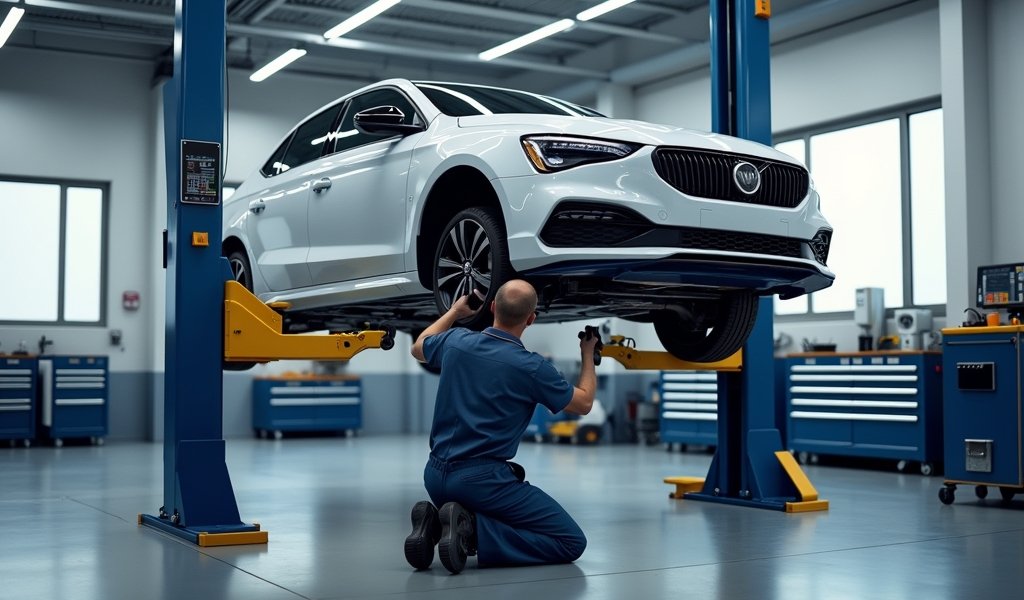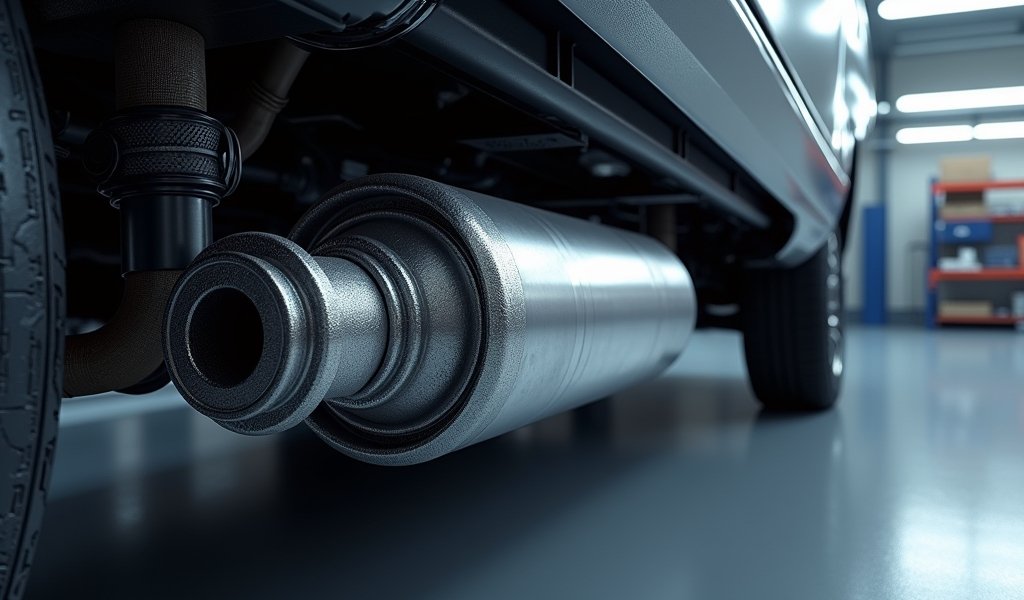Overview
The evaporative emission control canister is a critical component that captures fuel vapors from your gas tank, preventing harmful emissions while improving fuel efficiency. When functioning properly it helps reduce pollution and pass emissions tests, but signs of failure include check engine lights, fuel odors, and poor fuel economy, with replacement costs typically ranging from $200-$500.
Table of Contents
- What is an Evaporative Emission Control Canister?
- How the EVAP System Works
- Signs of a Failing EVAP Canister
- Diagnosing EVAP Canister Problems
- Replacing an EVAP Canister
- Maintenance Tips for Your EVAP System
- Environmental Impact of a Properly Functioning EVAP System
- Conclusion
- Frequently Asked Questions
What is an Evaporative Emission Control Canister?
The evaporative emission control canister might not be the first component that comes to mind when you think about your car, but it’s a critical part of your vehicle’s emissions system. Trust me, as someone who’s been elbow-deep in engines for over 20 years, this unsung hero deserves some attention.
Simply put, an evaporative emission control canister (or EVAP canister for short) is a charcoal-filled container that captures and stores fuel vapors from your gas tank. Without this nifty device, those vapors would escape into the atmosphere, contributing to air pollution and wasting fuel. Think of it as a small environmental guardian tucked away in your vehicle.
The evaporative emission control canister became standard in vehicles during the 1970s when emission regulations began tightening up. Today, it’s an integral part of every modern vehicle’s emission control system, working quietly behind the scenes to keep your car running efficiently and our air cleaner.
Located typically near the fuel tank, this canister is part of a larger system known as the Evaporative Emission Control (EVAP) system. While it might look like just a small plastic container, its role in reducing harmful emissions is enormous.
How the EVAP System Works
Let’s break down how this clever system works in everyday language. When you fill up your gas tank, especially on a hot day, fuel naturally evaporates and creates vapors. Instead of letting these vapors escape into the air (and wasting your hard-earned money), the evaporative emission control canister captures them.
The magic happens inside the canister, which contains activated charcoal or carbon. This material acts like a sponge, absorbing and storing fuel vapors until they can be safely reintroduced to the engine. When your engine is running under the right conditions, these stored vapors are purged from the canister and burned in the combustion process—a process aptly named “purging.”
This purging is controlled by the Powertrain Control Module (PCM)—your car’s computer brain—which opens a purge valve when conditions are right. Typically, this happens when your engine is warm and running efficiently, usually during steady highway driving.
The system is designed to be completely sealed, creating what engineers call a “closed loop.” Any leak in this system will trigger your check engine light, which is actually a good thing because it alerts you to emissions problems before they become serious.

Signs of a Failing EVAP Canister
Even the most reliable components can fail over time, and the evaporative emission control canister is no exception. Here are some telltale signs that your EVAP canister might be crying out for attention:
- Check Engine Light: The most common indicator is that pesky check engine light on your dashboard. Modern vehicles have sensors throughout the EVAP system that detect even small leaks or malfunctions.
- Fuel Odor: If you notice a persistent smell of gasoline around your vehicle, especially after refueling, it could indicate that your EVAP canister isn’t properly capturing fuel vapors.
- Failed Emissions Test: A faulty EVAP system is one of the most common reasons for failing emissions tests. If your vehicle recently flunked, the canister might be the culprit.
- Poor Fuel Economy: When the system isn’t working correctly, you might notice your gas mileage taking a hit. Those fuel vapors that should be recaptured and used are instead escaping into the atmosphere.
- Rough Idle or Stalling: In some cases, a severely compromised EVAP system can cause engine performance issues, including rough idling, hesitation, or even stalling.
Many drivers ignore these symptoms, especially if the car seems to be running fine otherwise. However, according to EPA research, a malfunctioning EVAP system can release significant amounts of hydrocarbons into the air, contributing to smog and ozone formation.
Remember, these symptoms can also indicate other issues, so proper diagnosis is crucial. Don’t just reset your check engine light and hope for the best—that’s like turning off a fire alarm without checking for a fire!
Diagnosing EVAP Canister Problems
When it comes to diagnosing EVAP canister issues, a systematic approach is your best friend. I’ve seen too many folks waste money replacing parts that weren’t actually broken. Let me walk you through how professionals tackle this diagnosis.
First things first, we need to retrieve those trouble codes from your vehicle’s computer. The most common EVAP-related codes include P0440 (general EVAP system failure), P0442 (small leak detected), and P0455 (large leak detected). These codes give us a starting point, but they’re just clues, not definitive answers.
Next comes a visual inspection. I always check for loose gas caps, damaged hoses, and visible cracks in the canister. You’d be surprised how often a simple loose gas cap triggers an EVAP code! In fact, about 30% of the EVAP issues I diagnose are resolved by simply tightening or replacing the gas cap.
For more complex issues, professional technicians use smoke testing—a process where non-toxic smoke is introduced into the EVAP system under slight pressure. If there’s a leak, the smoke will escape, making it visible to the technician. It’s like finding a hole in a bicycle inner tube by submerging it in water and looking for bubbles, but more sophisticated.
Another diagnostic tool is a scan tool that can command the EVAP purge and vent valves to open and close. By monitoring sensor readings during these tests, we can pinpoint exactly where the problem lies. Getting a proper car diagnostic service is crucial for accurately identifying EVAP system issues.
If all signs point to the canister itself being saturated or damaged, then replacement becomes necessary. But don’t jump to this conclusion without proper testing—I’ve seen too many perfectly good canisters unnecessarily replaced.
Replacing an EVAP Canister
So your diagnostics point to a faulty evaporative emission control canister—what now? Let’s talk about replacement options, costs, and whether this is a DIY job or best left to the professionals.
Replacement canisters typically cost between $100 and $300 for the part alone, depending on your vehicle make and model. Labor costs can add another $100 to $200, bringing the total repair bill to somewhere between $200 and $500. Luxury vehicles, as always, tend to be on the higher end of this range.
Can you replace it yourself? Possibly. The difficulty varies tremendously depending on your vehicle. On some cars, the canister is readily accessible near the fuel tank. On others, you might need to remove multiple components or even drop the fuel tank for access. Before attempting this as a DIY project, consult your vehicle’s service manual or look up model-specific tutorials online.
If you do decide to tackle this job yourself, here’s a simplified procedure:
- Ensure the engine is cool and the ignition is off
- Locate the canister (typically near the fuel tank, sometimes behind a rear wheel)
- Disconnect the electrical connector and hoses (take photos before removal to remember the configuration)
- Remove any mounting bolts or brackets securing the canister
- Install the new canister, reconnecting all hoses and electrical connections
- Clear any fault codes with a scan tool
Remember to properly dispose of the old canister, as it contains activated charcoal that has absorbed fuel vapors. Many auto parts stores will accept old parts for recycling.
For most drivers, I recommend having this job done professionally. A proper replacement ensures that the entire EVAP system is functioning correctly, which is essential for passing emissions tests and maintaining fuel efficiency. Plus, professionals can perform a smoke test after installation to verify that the system is leak-free.

Maintenance Tips for Your EVAP System
An ounce of prevention is worth a pound of cure, especially when it comes to your evaporative emission control system. Here are some practical tips to keep your EVAP system healthy and avoid costly repairs down the road.
First and simplest: always tighten your gas cap until it clicks. This seemingly minor detail prevents fuel vapors from escaping and keeps your EVAP system from working overtime. Make it a habit to give that cap an extra twist after filling up. Also, periodically inspect the gas cap for cracks or damage to the rubber gasket—a damaged cap is an easy and inexpensive fix.
Be mindful of your fueling habits. Avoid topping off your tank after the pump automatically shuts off. That extra squirt of fuel can overwhelm the system and force liquid fuel into the evaporative emission control canister, which is designed to handle vapors, not liquid fuel. This can saturate and damage the charcoal inside.
Pay attention to your fuel filter replacement schedule. While not directly part of the EVAP system, a clean fuel system helps maintain proper fuel pressure and reduces stress on related components.
Address check engine lights promptly, especially those related to the EVAP system. Small problems can escalate if ignored, potentially leading to more extensive and expensive repairs. Many auto parts stores offer free code reading services if you’re not ready for a full diagnostic service.
Consider having your EVAP system inspected during routine maintenance intervals, particularly if your vehicle is approaching the 100,000-mile mark. According to CarMD’s Vehicle Health Index, EVAP system problems become more common after this milestone.
Lastly, if you live in an area with extreme temperature fluctuations, be aware that these conditions can stress your EVAP system. Very hot weather increases fuel evaporation, making your EVAP system work harder, while freezing temperatures can make components brittle and more susceptible to damage.
Environmental Impact of a Properly Functioning EVAP System
Let’s talk about the bigger picture for a moment. Your evaporative emission control canister isn’t just another car part—it’s a critical component in reducing your vehicle’s environmental footprint.
Gasoline is a volatile organic compound (VOC) that readily evaporates, especially in warm weather. When these vapors escape into the atmosphere, they react with nitrogen oxides in the presence of sunlight to form ground-level ozone, a key component of smog. This isn’t the good kind of ozone that protects us from UV rays in the upper atmosphere—this is the harmful stuff that irritates lungs and damages plant life.
According to the Environmental Protection Agency, a single vehicle with a malfunctioning EVAP system can release up to 30 times more hydrocarbons into the air than one with a properly functioning system. Multiply that by millions of vehicles on the road, and you can see why these systems are so important.
Beyond environmental concerns, there’s also a practical economic benefit. The fuel vapors captured by your evaporative emission control canister are eventually returned to your engine and burned as fuel. That means a properly functioning EVAP system actually improves fuel efficiency by ensuring that every bit of gasoline you pay for is either used to power your vehicle or prevented from escaping into the atmosphere.
In regions with emissions testing requirements, a functioning EVAP system is essential for passing these tests. Failing an emissions test can mean denied vehicle registration and potential fines—not to mention the hassle of repeated testing until the issue is resolved.
By maintaining your EVAP system, you’re doing your part to reduce air pollution and combat climate change. It’s one of those rare situations where what’s good for your wallet aligns perfectly with what’s good for the planet.
Conclusion
The evaporative emission control canister might not be the most glamorous part of your vehicle, but its importance cannot be overstated. This humble component plays a crucial role in reducing harmful emissions, improving fuel efficiency, and keeping your vehicle compliant with environmental regulations.
From capturing fuel vapors to safely reintroducing them to your engine, the EVAP system is an engineering marvel that works silently in the background. When it’s functioning correctly, you won’t even know it’s there. When it fails, however, the symptoms can range from a simple check engine light to failed emissions tests and reduced fuel economy.
Remember the key warning signs we discussed: persistent check engine lights, fuel odors, poor fuel economy, and rough idle. These symptoms shouldn’t be ignored, as they can indicate a problem with your evaporative emission control canister or other components of the EVAP system.
Proper diagnosis is crucial before replacing parts, and while some adventurous DIYers might tackle canister replacement themselves, there’s no shame in seeking professional help for this complex system. Regular maintenance—including something as simple as properly tightening your gas cap—can help extend the life of your EVAP system and prevent costly repairs.
By keeping your evaporative emission control canister in good working order, you’re not just maintaining your vehicle—you’re also doing your part to protect our environment. And in today’s world, that’s something we can all feel good about.
Frequently Asked Questions
What exactly does the evaporative emission control canister do?
The canister captures and stores fuel vapors from your gas tank using activated charcoal. These vapors are later purged into the engine to be burned during normal operation rather than escaping into the atmosphere.
How much does it cost to replace an EVAP canister?
Replacement costs typically range from $200 to $500, including parts and labor. The price varies depending on your vehicle make and model and labor rates in your area.
Can I drive with a bad EVAP canister?
Yes, you can typically drive with a failing EVAP canister, but it’s not recommended long-term. You’ll likely fail emissions tests, waste fuel, and contribute to air pollution.
How long does an EVAP canister last?
With proper care, an evaporative emission control canister can last the lifetime of your vehicle. However, factors like overfilling the gas tank or ignoring small leaks can significantly reduce its lifespan.
Will a bad EVAP canister affect my fuel economy?
Yes, a malfunctioning EVAP system can negatively impact fuel economy. When fuel vapors escape rather than being recaptured and burned, you’re essentially losing fuel you’ve paid for.


Pingback: Carbon Canister Purge Valve: Top 3 Fixes - knowsyourcar.com
Pingback: Vapor Recovery System Testing: Save Fuel - knowsyourcar.com